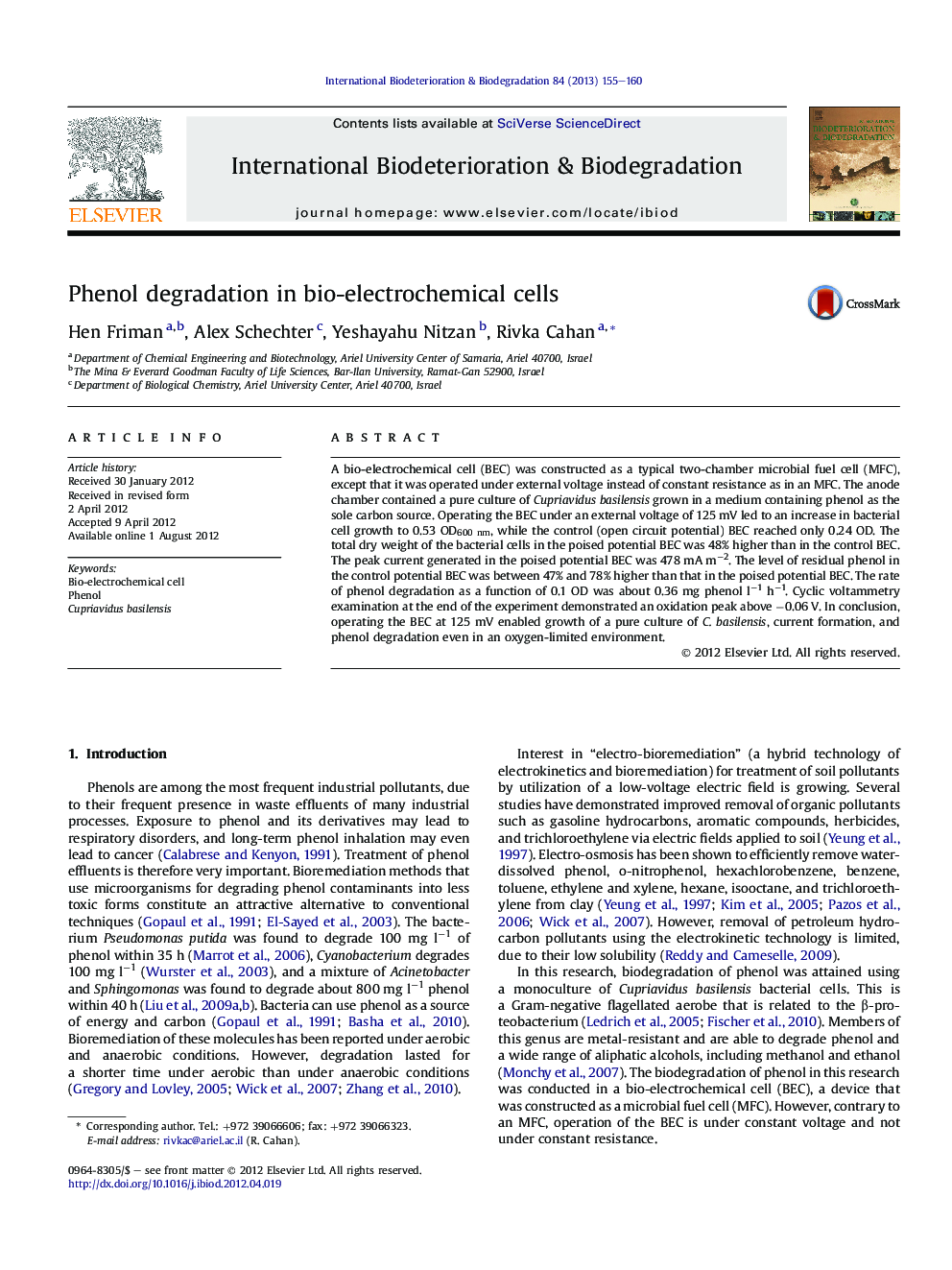| Article ID | Journal | Published Year | Pages | File Type |
|---|---|---|---|---|
| 6289454 | International Biodeterioration & Biodegradation | 2013 | 6 Pages |
Abstract
A bio-electrochemical cell (BEC) was constructed as a typical two-chamber microbial fuel cell (MFC), except that it was operated under external voltage instead of constant resistance as in an MFC. The anode chamber contained a pure culture of Cupriavidus basilensis grown in a medium containing phenol as the sole carbon source. Operating the BEC under an external voltage of 125 mV led to an increase in bacterial cell growth to 0.53 OD600 nm, while the control (open circuit potential) BEC reached only 0.24 OD. The total dry weight of the bacterial cells in the poised potential BEC was 48% higher than in the control BEC. The peak current generated in the poised potential BEC was 478 mA mâ2. The level of residual phenol in the control potential BEC was between 47% and 78% higher than that in the poised potential BEC. The rate of phenol degradation as a function of 0.1 OD was about 0.36 mg phenol lâ1 hâ1. Cyclic voltammetry examination at the end of the experiment demonstrated an oxidation peak above â0.06 V. In conclusion, operating the BEC at 125 mV enabled growth of a pure culture of C. basilensis, current formation, and phenol degradation even in an oxygen-limited environment.
Keywords
Related Topics
Life Sciences
Environmental Science
Environmental Science (General)
Authors
Hen Friman, Alex Schechter, Yeshayahu Nitzan, Rivka Cahan,
